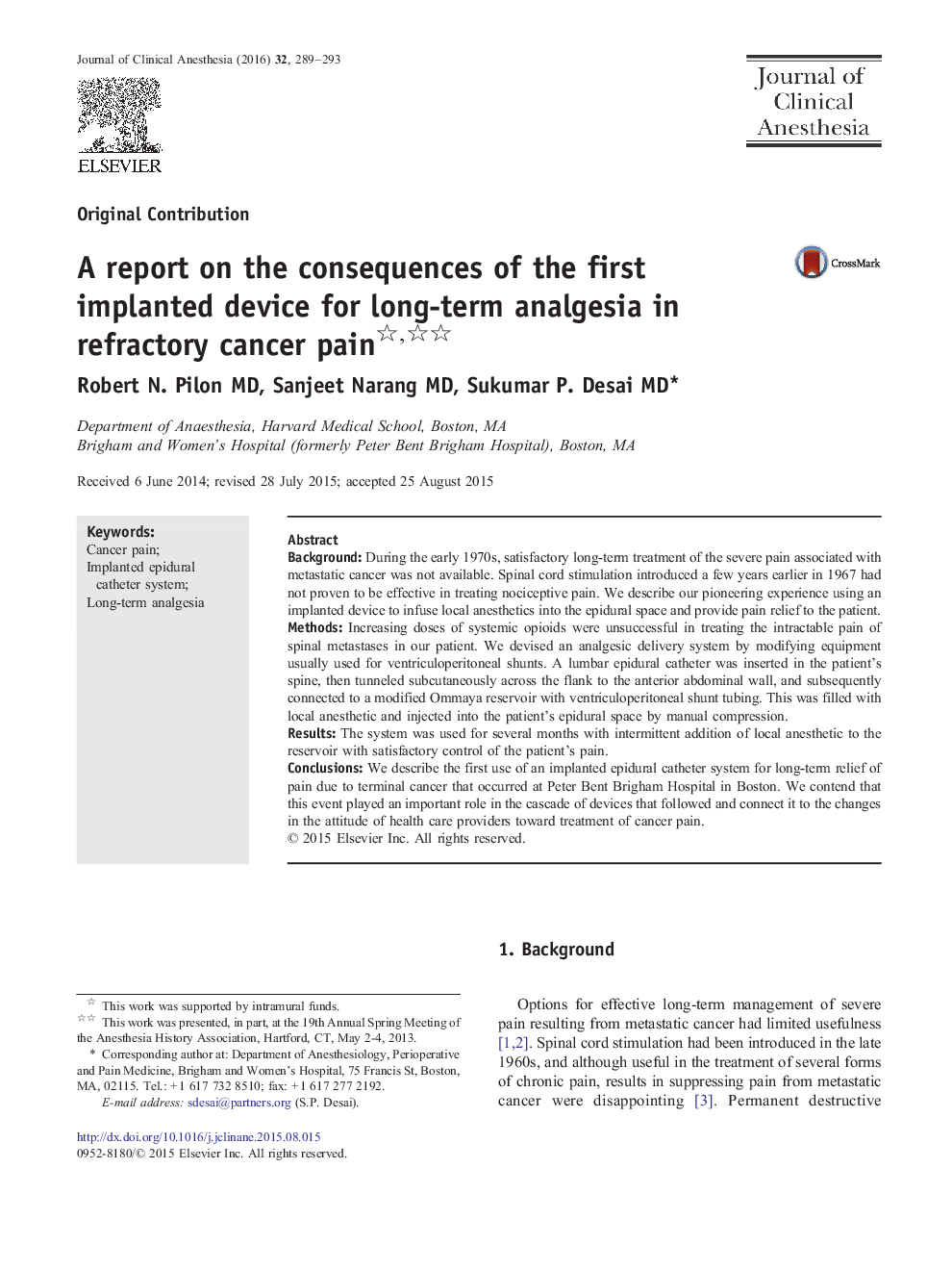| Article ID | Journal | Published Year | Pages | File Type |
|---|---|---|---|---|
| 5884892 | Journal of Clinical Anesthesia | 2016 | 5 Pages |
â¢First use of an implanted epidural catheter for relief of intractable cancer pain.â¢Evolution of drugs and implanted devices used in treatment of chronic pain.â¢Changes in societal, physician, and patient attitudes towards treatment of pain in terminal illness.
BackgroundDuring the early 1970s, satisfactory long-term treatment of the severe pain associated with metastatic cancer was not available. Spinal cord stimulation introduced a few years earlier in 1967 had not proven to be effective in treating nociceptive pain. We describe our pioneering experience using an implanted device to infuse local anesthetics into the epidural space and provide pain relief to the patient.MethodsIncreasing doses of systemic opioids were unsuccessful in treating the intractable pain of spinal metastases in our patient. We devised an analgesic delivery system by modifying equipment usually used for ventriculoperitoneal shunts. A lumbar epidural catheter was inserted in the patient's spine, then tunneled subcutaneously across the flank to the anterior abdominal wall, and subsequently connected to a modified Ommaya reservoir with ventriculoperitoneal shunt tubing. This was filled with local anesthetic and injected into the patient's epidural space by manual compression.ResultsThe system was used for several months with intermittent addition of local anesthetic to the reservoir with satisfactory control of the patient's pain.ConclusionsWe describe the first use of an implanted epidural catheter system for long-term relief of pain due to terminal cancer that occurred at Peter Bent Brigham Hospital in Boston. We contend that this event played an important role in the cascade of devices that followed and connect it to the changes in the attitude of health care providers toward treatment of cancer pain.
